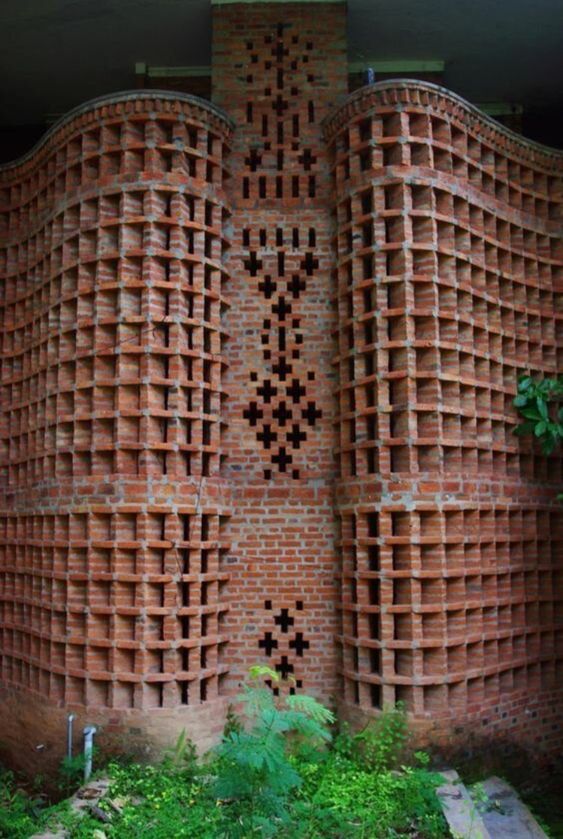#14493. Wavy Perforated Brick Facade: A Play of Texture and Light

Before us is an impressive example of a brick facade demonstrating the mastery of modern interpretation of traditional building materials. The structure presents a wave-like wall with expressive surface plasticity created through protruding brickwork and perforation. The central part of the facade features a geometric pattern of voids that not only serves as a decorative element but likely provides ventilation or light filtration.
Special attention should be paid to the bricklaying technique with a rhythmic alternation of protruding bricks, creating the effect of a volumetric wavy texture. This technique gives the monolithic structure visual lightness and dynamism, despite the massiveness of the material. The wave-like shape of the facade breaks the monotony of a traditional brick wall and creates an interesting play of light and shadow on the surface.
This architectural element demonstrates how when designing a facade, one can creatively approach the use of traditional materials. Homeowners can adapt similar techniques on a smaller scale – creating textured areas, perforated elements, or wave-like surfaces can transform an ordinary brick wall into an expressive architectural accent. Such details can be applied to screen certain areas, organize lighting effects, or simply serve as a decorative element highlighting the individuality of the building.